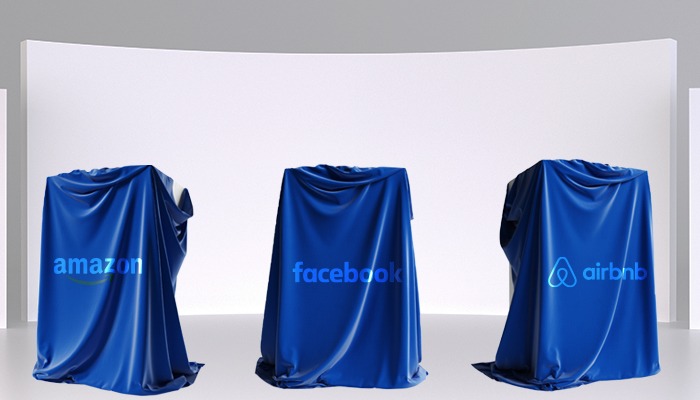In a previous article from this series, I gave you a few suggestions on finding a viable startup idea. If you are an energetic entrepreneur, your primary goal would be to materialize your vision and test it. This is why the MVP philosophy – Minimum Viable Product – is so important.

The acronym is quite appealing as it unveils the topic from the start. MVP or Minimum Viable Product is the minimum product (with the shortest list of features) with real chances of finding customers or end-users.
How to project an MVP

The various research papers I’ve studied agree on the following steps:
· Identify the problem and start with the idea. I’ve already explained in a past article how startups are built around a problem that requires a solution or a customer’s specific need. Isolate the core elements of that need and resist the urge to add additional features. Their time will come later in this process.
· Have a clear image of the target market. How many users we’re talking about? Where are they located, geographically speaking? What’s their purchasing power, and how much can they afford to spend on a specific product?
· What business goals did you set up for your MVP? Conquering the world would be lovely, so would a unicorn (startup over $1 billion), but such ambitions are premature, and you need to stay focused on the objectives within your reach. The MVP must be well-positioned in your business plan, primarily in your financial projections. You could either launch a product as an income-producer or get valuable feedback from end-users.
The purpose of an MVP
The last meaning is the most interesting and, strangely, more profitable in the medium term. It is based on the definition that author and entrepreneur Eric Ries offers: the product that allows a team to gain a maximum level of knowledge about users with a minimum of effort.

This type of approach seems better suited for well-financed startups, but it’s not. It is part of the lean startup philosophy and aims to quickly and inexpensively burn through the steps on the way to profit. Eric Ries says that a richer, multi-functional product can cost more time and money than investing in an MVP with lower revenue potential but is extremely useful in technical and market tests. Compared to an MVP, a more elaborate product cannot be tested in natural conditions and does not allow quick adjustment, which increases its chances of failure.
Minimum Viable Product examples
The MVP philosophy was the basis of today’s global giants.

• Amazon started as a physical book delivery service. In the beginning, it was a website where you ordered books; Amazon purchased them from distributors and delivered them to you by post-mail. This entire process was the predecessor of e-books, Kindle devices, and virtual stores.
• Airbnb started with the founders making their homes available to potential tourists. Because this endeavour was successful, the platform currently offers almost any services related to tourism and travel.
• Facebook initially linked Harvard students to a social network without much functionality. Later on, brand pages and ads appeared, the company acquired Whatsapp and Instagram, launched the Marketplace and everything else that Facebook offers nowadays.
• Dropbox had a far more exciting strategy: it started with a video presentation. The founders explained the functionality of a product that allowed storing documents in the cloud and could be accessed precisely like a local folder on your computer. The founders initiated the creative process only when the positive reactions of those interested validated their idea.
How I applied the MVP philosophy
My startup idea didn’t come about suddenly but took shape over 13 years of industry experience. From a simple agent in a multinational company operating in the capital market to becoming a shareholder, investor, and then CEO, my entrepreneurial story has provided me with the concepts, ideas, and know-how to materialize a daring ambition called Key Way Group.
The product itself, the targeted market segment and the business objectives were clear to me from the beginning. Everything tends to unravel faster when you have a track record of taking companies from the ground up, bringing them to the peak of their development and culminating in a successful exit.
The hype for online trading and financial markets that started in the US and gradually extended to Europe convinced me to launch a product with an organic component that would naturally grow alongside technological innovation happening by the minute.
My MVP product is a trading platform offering free, fast and broad access to the CFD market, 0 commissions and best execution policies.
From this point on, my automation efforts spread throughout the ecosystem. Microsoft solutions now cover internal communication, project management and reporting needs, offering employees the necessary time to focus on creation and development rather than wasting their time with robotic tasks.
Why you should consider the MVP approach
It’s true; you might think that all successful businesses started with a single product with a few features, which later grew and diversified. On the other hand, the MVP philosophy allows you to systematize this sort of growth by keeping in check your desire to achieve perfection in the development of your product at a time when the need for feedback is essential.
Last but not least, a Minimum Viable Product is versatile and isn’t confined in a particular market as tried and tested products do. This would take the brunt of failure over the entire startup activity and would push it towards demise sooner rather than later.
You can follow me on Twitter and LinkedIn!


